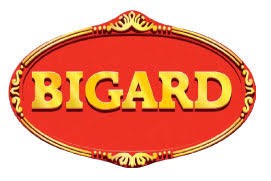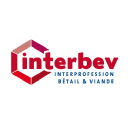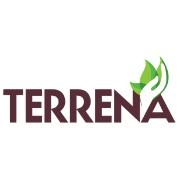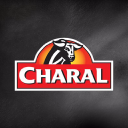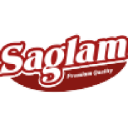Synthèse
The global meat market, valued at USD 838.3 billion in 2020, is anticipated to grow at a CAGR of +7% through 2025. Despite the COVID-19 pandemic influencing consumption patterns, with domestic consumption increasing by 7% in 2020 compared to a general downturn in previous years, international trade also experienced shifts. For instance, French meat exports remained stable in 2020, with pork exports increasing significantly to about $1.2 billion in 2020, reflecting a strong demand from markets like China and Japan.
France also observes a trade deficit, as evidenced by an overall 11.7% decrease in meat imports during the same period, with a noted preference for European-sourced imports. The pandemic bolstered online meat purchases, and household consumption of meat, particularly frozen meats, surged in the confinement periods. Nonetheless, consumption of meat outside the home suffered due to lockdowns and health regulations. In the French context, the meat industry maintains a steady performance with significant players such as Agrial, LDC, and Carrefour marking their presence in the market. Despite fluctuations in consumption habits and the growing interest in quality-certified meats (organic or red label), meat remains an integral component of the dietary preferences in France, particularly poultry for the younger demographic and red meats for those over 50.
Analyzing the Dynamics of Meat Consumption Trends in the French Market
The French market has exhibited strong and stable demand for meat products with a clear cultural inclination towards meat as a significant part of the traditional diet. Meat consumption in France has witnessed an evolution, with a shifting preference towards white meats, especially poultry, which now represents the most significant portion of the meat products purchased by households, at around 27%. Traditionally prominent red meats such as beef and pork still maintain a robust presence, with beef consumption showcasing resilience with figures around 13.2 thousand tons in 2020, marking a clear rebound from previous years. Pork has had a contrasting trajectory, as consumption volumes showed a decline but have since seen varying levels of demand.
Observing consumer profiles, those in the age bracket of 35 to 49 years predominantly favor poultry and rabbit meat, opting less for beef and pork. In contrast, older demographics, particularly those between 50 and 64 years and over 65, demonstrate a preference for red meats, with beef taking precedence over pork. The market is also characterized by an income-agnostic purchasing behavior where pork emerges as a popular choice across different income classes. Households in the lower middle income segment appear to dominate pork purchases, though the exact proportions may not significantly deviate from the distribution of French households across various income levels. This signifies that pork is accessible to a broad spectrum of consumers.
When considering family dynamics, families with children in middle school/high school and those with adult children were seen to consume more poultry and rabbit meats. In comparison, the consumption of beef and pork is more varied across different family life stages. The market size of the meat processing and preservation industry in France is estimated to be strong, increasing from around 34.5 billion euros to an estimated 37.1 billion in 2020.
French meat exports have remained fairly consistent, although specific categories like pork have seen a growth spurt, increasing from about 0.9 billion to 1.2 billion in 2020, indicating a diversified destination portfolio that includes European Union countries, China, and Japan. Considering imports, there has been an 11.7% reduction in 2020, with imports mostly originating from other European countries. The meat market also faced the impact of the COVID-19 pandemic, which led to increased home consumption with notable spikes during the lockdown periods. Online channels, in particular, surged in popularity.
Major Players Shaping the French Meat Market Landscape
The meat market in France is a significant segment within the larger agricultural and food industry, characterized by an array of influential players ranging from livestock breeders to meat processors and distributors. As the market trends and consumer preferences evolve, these key actors continue to redefine their roles and strategies to maintain and improve their positioning within the market.
- One such player is Agrial, a renowned cooperative group with diversified agricultural and food-processing activities. This enterprise is known for its commitment to sustainable farming practices and supplying quality meat products among various other agrarian goods.
- Another important name in the market is Terrena, a dynamic collective that takes pride in its cooperative business model and focuses on promoting innovative agricultural practices. Terrena has a substantial presence in the meat market, delivering fine-quality products across various meat categories.
- Joining these cooperatives is Sodial, a prominent livestock breeders' collective whose expertise in animal husbandry ensures a consistent supply of quality meats essential for the meat processing industry.
- In the specialized sector of pork meat, Cooperl ARC Atlantique stands out as an influential player. With a comprehensive approach to pig farming, Cooperl ARC Atlantique oversees production stages from breeder to distribution, maintaining high-quality standards throughout the pork meat supply chain.
- The poultry market also has its set of significant actors with Terrena making a mark here as well. However, it shares the stage with the LDC group, a heavyweight in the poultry segment, known for its wide range of products that cater to consumer tastes and expectations. The LDC group's influence extends beyond production, as it also invests heavily in marketing and brand promotion, successfully positioning itself as a household name in France.
- Maïsadour is another enterprise that has expanded its reach in the poultry market, integrating farming, processing, and distribution steps to serve its customer base efficiently with quality poultry offerings.
- When it comes to beef and pork meat processing, Bigard is a name to note. With a longstanding reputation, Bigard specializes in both categories and has become synonymous with quality red meat products in France. On the distribution front, Carrefour leads the pack as one of the most recognizable supermarket chains, not only in France but also globally. With a vast network of retail stores, Carrefour plays a critical role in making a diverse range of meat products accessible to consumers.
Intermarché, Auchan, Leclerc, Carrefour and other supermarket giant, contributes significantly to the meat market through its extensive product offerings and competitive pricing, often appealing to a broad spectrum of consumers looking for both value and quality.
à la compréhension de ce marché
Détail du contenu
 Informations
Informations
- Nombre de pages : 30 pages
- Format : Version digitale et PDF
- Dernière mise à jour : 05/12/2021
 Sommaire et extraits
Sommaire et extraits
1 Market overview
1.1 Definition and presentation
The meat market refers to the markets for:
- red meat (which includes beef, veal and pork) ;
- white meat (which includes poultry meat).
The global meat market is doing well overall, as the market is expected to grow by 7% between 2021 and 2025. World production is also estimated at 337.2 million tons of carcass equivalent.
The French meat market also seems to be following the trend of the global market as it tends to grow year after year. There are many players in the meat market, including breeders such as Soodial, meat manufacturers such as the LDC group and distributors such as Carrefour.
The French are important consumers of meat. Indeed, nearly 5.7 million tons of meat are consumed each year. Meat occupies an important place in the eating habits of the French and is even described as being a "culturally important marker of the French diet".
However, for the last thirty years, meat consumption in France has tended to decreaseThere has been a change in consumption habits and in the type of meat consumed, due in particular to health scandals (mad cow disease, bird flu, meat of hidden origin and nature), to the awareness of the French to the impact on health ofat the same time, the French seem to turn more and more of their meat purchases towards organic or red label meat, considered by consumers as a guarantee of quality.
1.2 The world meat market
The global meat market was estimated to be worth USD ***.* billion in **** and is expected to grow at a CAGR of +*% over the period ****-****.
Global Meat Market Size World, ****-*****, in billion dollars Source: ****
Global meat production is estimated at ***.* MTEC.
World meat production by region World, ****, in million tons ...
1.3 Overall presentation of the French meat market
To make the graph below, we used the Insee data for NAF code **.* - "Processing and preserving of meat and preparation of meat products". Unfortunately, the total turnover of this code stopped in ****, but to find the size, we therefore multiplied the **** turnover by the average annual turnover indices.
For example, ...
1.4 France's foreign trade: A trade deficit
in this part, we used four Uncomtrade codes to be able to make these graphs, so we have the codes:
****, beef, fresh, frozen ****, pork, fresh, chilled or frozen ****, sheep or goat meat, fresh, chilled or frozen ****, poultry meat and poultry offal, fresh, chilled or frozen
French meat exports to foreign ...
1.5 The impact of covid-19 on the meat market
The volume of meat purchased increases with the pandemic...
The health crisis, which occurred in ****, has changed the consumption habits of the French, both in terms of quantities and the means of distribution used. In a so-called "normal" year (***), the volumes of meats purchased experienced a more limited increase as the ...
2 Analysis of the demand
2.1 French meat consumption
meat consumption
evolution and individual consumption of meat France, ****-****, in kgEC and in % Source: ****
Breakdown of French individual meat consumption France, ****/****/****, in % Source: ****
the average meat consumer basket
In the report published by FranceAgriMer in ****, French meat consumption was estimated at **.* billion euros in ****, up sharply from ****, when it was ...
2.2 Poultry meat consumption
Types of chickens
Distribution of the type of chicken quality France, ****, in % Source: ****
it can be seen that three quarters of the chicken consumed in France is of standard quality and that we only have a quarter of high-end chicken that is consumed. This can be partly explained by the fact ...
2.3 Beef consumption
Focus on beef consumption
evolution of beef consumption France, ****-****, in thousands of tons Source: ****
as with pork, the volume of beef was initially down between **** and ****, but in **** it started to rise again, with for example +**.* thousand tons of frozen ground beef purchased compared to the previous year.
Profile of ...
2.4 Pork consumption
Focus on the evolution of pork demand
Evolution of pork consumption
It is noted that between **** and ****, all types of pork meats had decreased in terms of volume purchased (***), which was already highlighted in Section *.*.
The profile of pork consumers
Distribution of fresh pork consumers by age France, ****, in % Source: ****
When ...
2.5 Organic meat, a new trend?
Organic poultry meat
In ****, **% of French people said they eat meat and among them **% eat organic meat, according to anIFOP.
Distribution of the number of consumers of organic meat France, ****, in % Source: ****
This desire to consume organic meat according to the respondents is the result of several factors.
Breakdown of reasons ...
2.6 Other trends
The development of prepared meals correlates with the decrease in time spent cooking
One of the main growth vectors for the meat market in France is that of prepared/compounded meals, which is linked to the higher growth and value added rates of the meat market in France.
This can be ...
3 Market structure
3.1 Structure of the meat market
An overview of the market
RHD : Catering industry
GMS: Large and medium-sized supermarkets
The meat market in France is driven by more than *,*** companies employing ***,*** people in ****.
This market is mainly occupied by large companies (***).
Distribution of turnover and added value of companies in the meat market France, ****, in % Source: ****
The ...
3.2 The meat industry in France
The National Livestock Confederation details some characteristics of meat production in France.
It is organized according to two herds:
The "dairy herd", it represents **% of the total herd and is composed of animals originating from and destined for milk production. **% of the animals are selected for the renewal of the herd. ...
3.3 The meat industry in France
In ****, there were *,*** companies in metropolitan France, including Corsica, with a total workforce of **,*** employees.
Distribution of the number of meat processing and preservation companiesFrance, ****, in number of units
Source: ****
The above map is based on Accos data for NAF codes **.**Z - "Processing and preserving of butcher's meat"-, **.**Z ...
3.4 Meat distribution in France
Meat distribution channels
Distribution of meat distribution channels (***) in terms of quantities purchased France, ****, as a % Source: ****
it can be seen that hypermarkets and supermarkets dominate the distribution channels since they represent **.*% of the meat distribution shares in terms of quantities purchased.
Pork meat
According to FranceAgriMer, the marketing of fresh ...
4 Analysis of the offer
4.1 The main meat price indices in France
Average annual price index for meat consumption France, ****-****, base *** in **** Source: ****
To make this graph, we used the Coicop code **.*.* - "Meat" -. We notice that prices have increased over the period ****-****, since in **** the index was *** while in **** it was estimated at ***.**, a price increase of *.**%. The average ...
4.2 The main price indices of the poultry meat market in France
Source: ****
There is a clear price difference between organic, free-range and standard chickens. These price differences are even greater when compared on the basis of retail prices. This can be explained by several factors. For organic poultry, the price of organic raw materials (***) is more expensive than standard raw materials. Poultry ...
4.3 The main price indices of the pork market in France
The change in the average price of fresh butchered pork from **** to **** is reported in the graph below.
Average price of pork in fresh butchery France, ****-****, in €/kg Source: ****
we note that the price in fresh butchery has changed little since ****. Nevertheless, we note a slight increase in ****. This meat ...
4.4 The main price indices of the beef market in France
Average price of beef by distribution channel France, ****, in Euros Source: ****
it can be seen that the prices of markets and specialized stores are between ** and **% higher than the prices offered in hypermarkets.
Table of wholesale prices, in € excluding tax per kg, on **/**/****MIN de Rungis: meat cuts
Product Average price Variation ...
5 Regulation
5.1 The main regulatory standards governing the meat market in France
Non-exhaustive list.
The " Hygiene Package " This is a set of European hygiene standards to ensure a minimum level of sanitary safety on a European scale and is imposed on all actors in the food chain. They include mainly the following regulations Regulation (***) No ***/****, Regulation (***) n°***/****, Regulation (***) n°***/****, Regulation (***) n°***/****, Regulation (***) n°***/****, Regulation ...
5.2 Some specifications concerning the regulation of the meat market
The Egalim law
The Egalim law aims to restore the balance of commercial relations between producers and large-scale distribution, but also to make healthy and sustainable food accessible to all consumers. This law has been enacted since October ****.
The impact
An article in Le Monde on June *, **** details the impact of ...
6 Positioning of the actors
6.1 The main companies of the meat market in France
- Cooperl Arc Atlantique
- Bigard groupe
- Maïsadour
- LDC Groupe
- Bouchers Services Groupe Codéviande
- Interbev
- Terrena (Coopérative)
- Charal
- Saglam France
- Solina
- Socopa (Bigard Groupe)
- Sicarev
- Kermené (E Leclerc)
- Guasch Viandes
- Boucheries Nivernaises
 Liste des graphiques
Liste des graphiques
- Le budget global des ménages pour les produits carnés
- Structure des achats des volumes de produits carnés achetés par les ménages
- Taille de marché de l'industrie de transformation et de conservation de la viande et de préparation de produits à base de viande
- Indice moyen annuel du chiffre d'affaires du code NAF 10.1
- Segmentation de la demande du marché du poulet
Toutes nos études sont disponible en ligne et en PDF
Nous vous proposons de consulter un exemple de notre travail d'étude sur un autre marché !
Dernières actualités
Entreprises citées dans cette étude
Cette étude contient un panorama complet des entreprises du marché avec les derniers chiffres et actualités de chaque entreprise :
 Choisir cette étude c'est :
Choisir cette étude c'est :
Accéder à plus de 35 heures de travail
Nos études sont le résultat de plus de 35 heures de recherches et d'analyses. Utiliser nos études vous permet de consacrer plus de temps et de valeur ajoutée à vos projets.
Profiter de 6 années d'expérience et de plus de 1500 études sectorielles déjà produites
Notre expertise nous permet de produire des études complètes dans tous les secteurs, y compris des marchés de niche ou naissants.
Notre savoir-faire et notre méthodologie nous permet de produire des études avec un rapport qualité-prix unique
Accéder à plusieurs milliers d'articles et données payantes
Businesscoot a accès à l'ensemble de la presse économique payante ainsi qu'à des bases de données exclusives pour réaliser ses études de marché (+ 30 000 articles et sources privées).
Afin d'enrichir nos études, nos analystes utilisent également des indicateurs web (semrush, trends…) pour identifier les tendances sur un marché et les stratégies des entreprises. (Consulter nos sources payantes)
Un accompagnement garanti après votre achat
Une équipe dédiée au service après-vente, pour vous garantir un niveau de satisfaction élevé. (+33) 9 70 46 55 00
Un format digital pensé pour nos utilisateurs
Vous accédez à un PDF mais aussi à une version digitale pensée pour nos clients. Cette version vous permet d’accéder aux sources, aux données au format Excel et aux graphiques. Le contenu de l'étude peut ainsi être facilement récupéré et adapté pour vos supports.
 Nos offres :
Nos offres :
the meat market | France
- Quels sont les chiffres sur la taille et la croissance du marché ?
- Quels leviers tirent la croissance du marché et leur évolution ?
- Quel est le positionnement des entreprises sur la chaine de valeur ?
- Comment se différencient les entreprises du marché ?
- Données issues de plusieurs dizaines de bases de données
Pack 5 études (-15%) France
- 5 études au prix de 75,6€HT par étude à choisir parmi nos 800 titres sur le catalogue France pendant 12 mois
- Conservez -15% sur les études supplémentaires achetées
- Choisissez le remboursement des crédits non consommés au terme des 12 mois (durée du pack)
Consultez les conditions du pack et de remboursement des crédits non consommés.
- 01/03/2024 - Mise à jour des données financières de l'entreprise Cooperl Arc Atlantique
- 01/03/2024 - Mise à jour des données financières de l'entreprise Maïsadour
- 30/12/2023 - Ajout des informations de l'entreprise Boucheries Nivernaises
- 04/11/2023 - Mise à jour des données financières de l'entreprise Cooperl Arc Atlantique
- 04/11/2023 - Mise à jour des données financières de l'entreprise Maïsadour
- 30/08/2023 - Ajout des informations de l'entreprise Guasch Viandes
- 03/08/2023 - Mise à jour des données financières de l'entreprise Cooperl Arc Atlantique
- 03/08/2023 - Mise à jour des données financières de l'entreprise Maïsadour
- 06/07/2023 - Ajout des informations de l'entreprise Kermené
- 06/07/2023 - Ajout des informations de l'entreprise Sicarev
- 06/07/2023 - Ajout des informations de l'entreprise Socopa
- 23/06/2023 - Ajout des informations de l'entreprise Solina
- 22/06/2023 - Ajout des informations de l'entreprise Saglam France
- 16/06/2023 - Ajout des informations de l'entreprise Charal
- 02/05/2023 - Mise à jour des données financières de l'entreprise Cooperl Arc Atlantique
- 16/04/2023 - Mise à jour des données financières de l'entreprise Maïsadour
- 26/02/2023 - Mise à jour des données financières de l'entreprise Terrena (Coopérative)
- 26/02/2023 - Mise à jour des données financières de l'entreprise LDC (Groupe)
- 22/01/2023 - Ajout des informations de l'entreprise Terrena (Coopérative) 2
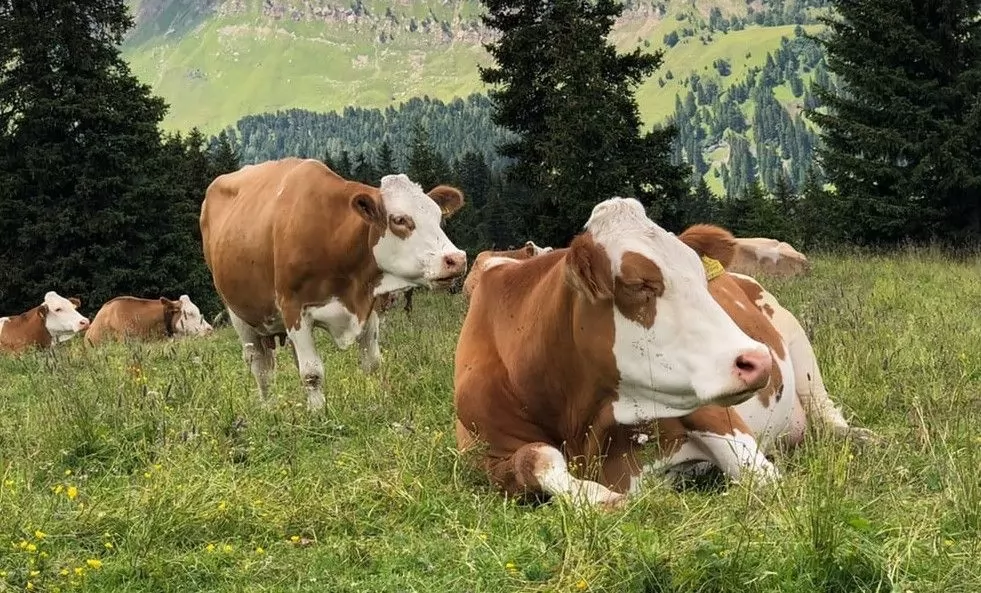




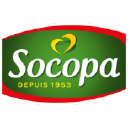 Socopa, filiale du groupe Bigard, ferme son abattoir à Celles-sur-Belle dans les Deux-Sèvres - 25/11/2023
Socopa, filiale du groupe Bigard, ferme son abattoir à Celles-sur-Belle dans les Deux-Sèvres - 25/11/2023
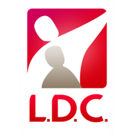 Les volailles de Loué à la conquête du marché polonais - 23/11/2023
Les volailles de Loué à la conquête du marché polonais - 23/11/2023
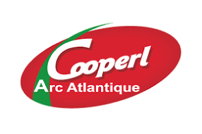 Cooperl, le poids lourd du porc, victime de l’inflation - 25/09/2023
Cooperl, le poids lourd du porc, victime de l’inflation - 25/09/2023
